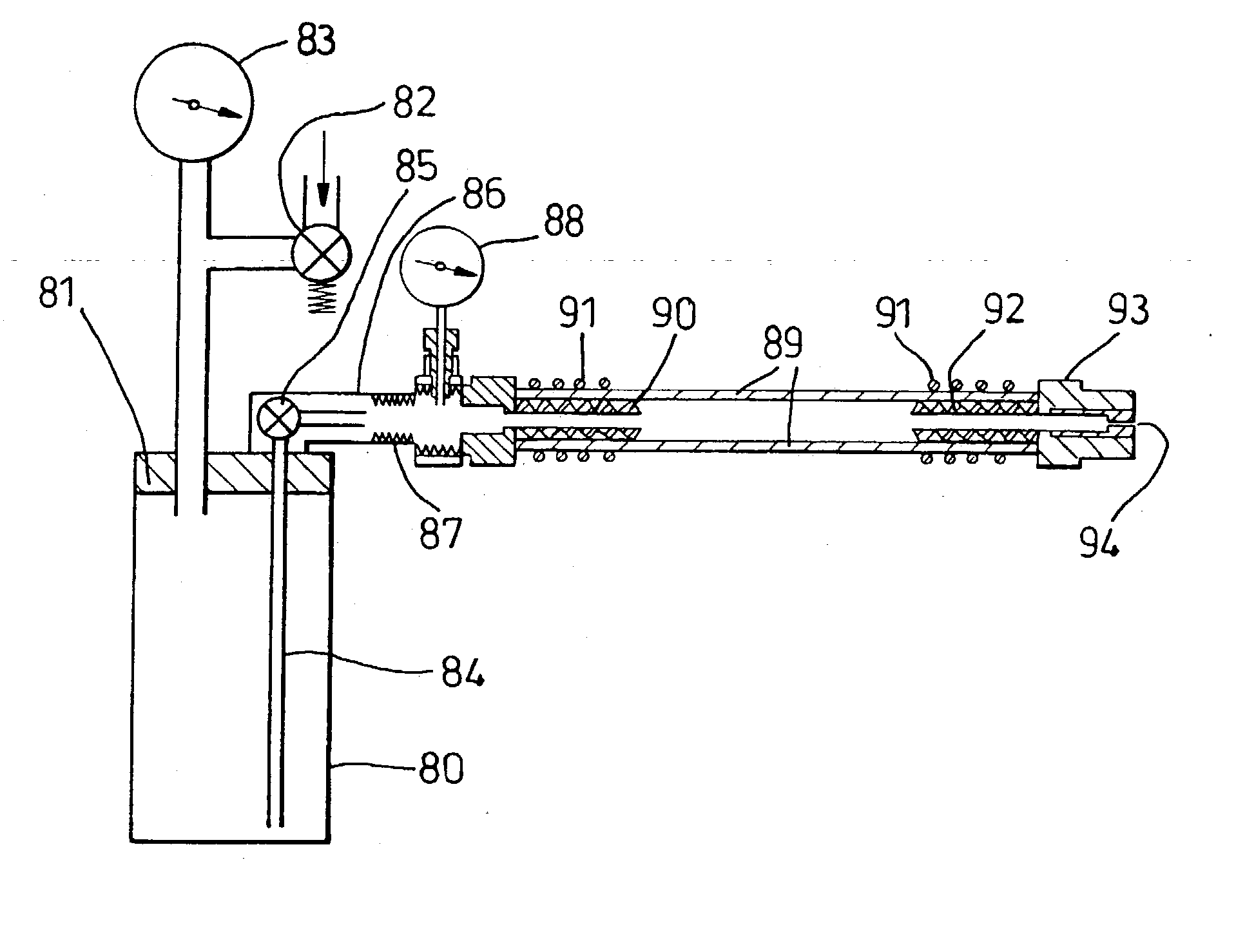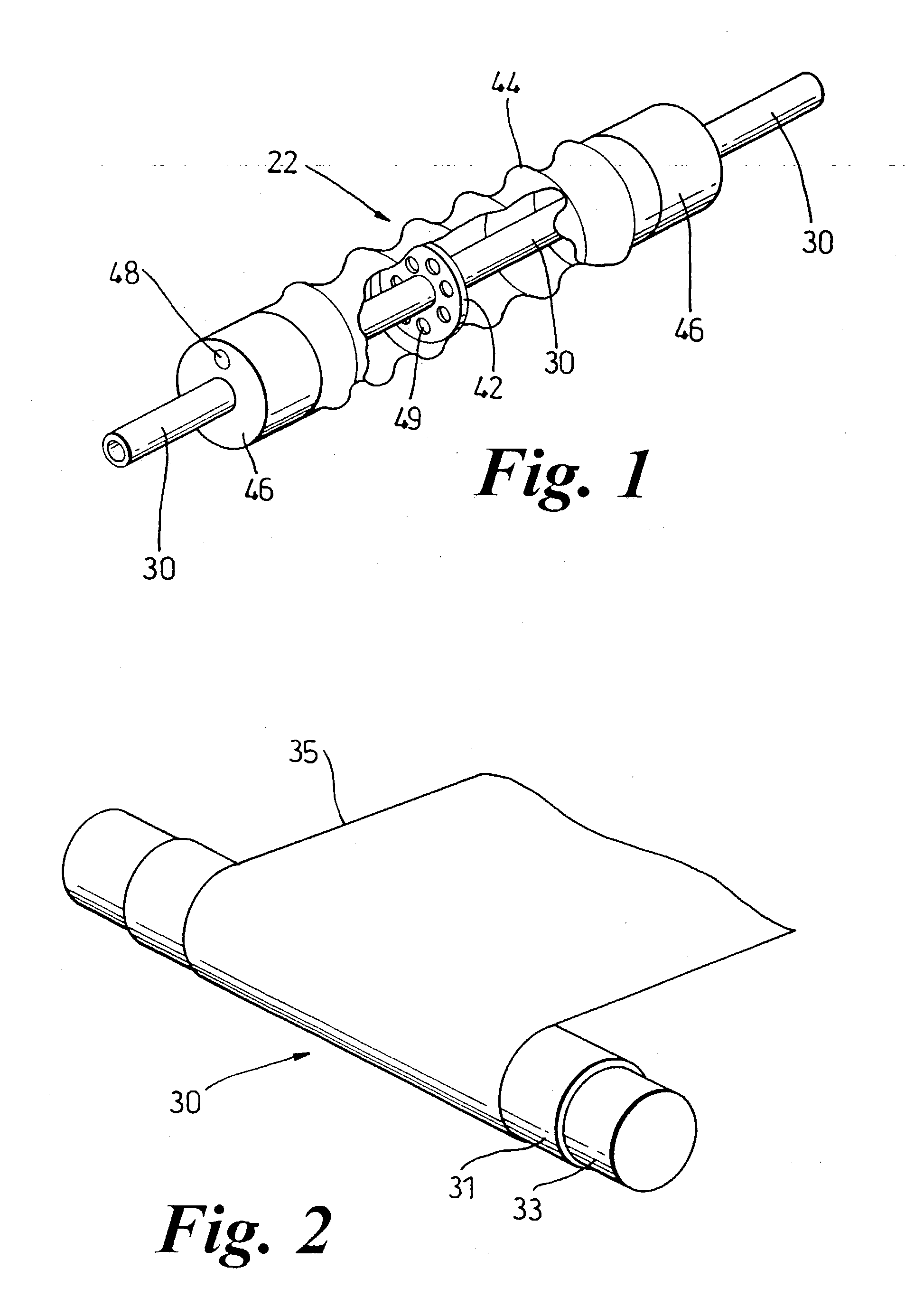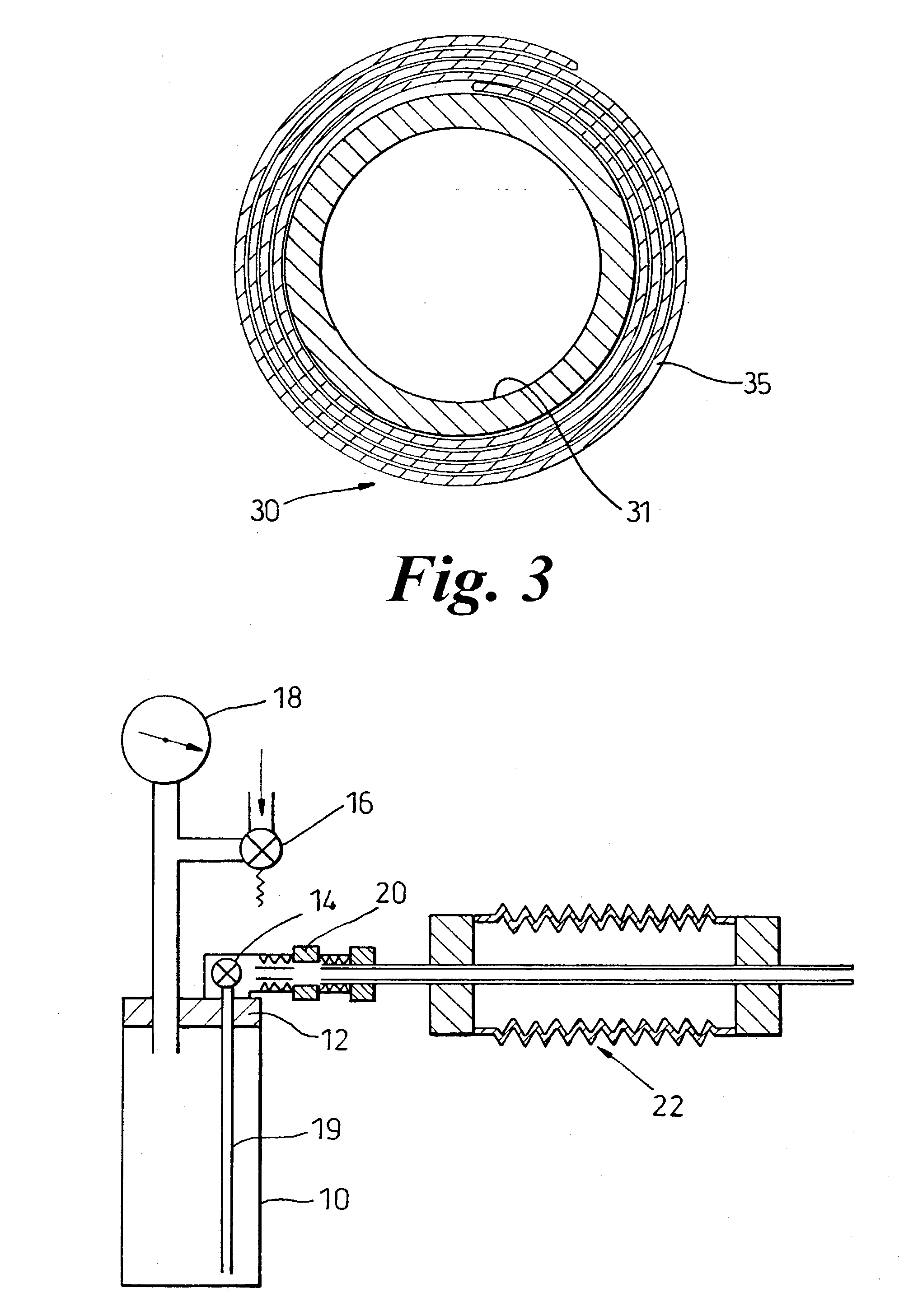Cryogenic fluid transfer tube
a fluid transfer tube and cryogenic technology, applied in the direction of rigid pipes, flexible pipes, gas/liquid distribution and storage, etc., can solve the problems of reduced exterior temperature, excessive weight and size, and poor bend radius
- Summary
- Abstract
- Description
- Claims
- Application Information
AI Technical Summary
Benefits of technology
Problems solved by technology
Method used
Image
Examples
Embodiment Construction
[0079] A thin longitudinally expanded PTFE base tube possessing a wall thickness of 0.131 mm, an inner diameter of 4.0 mm, Gurley number of 0.9 sec, and an IBP of 0.79 psi (0.0055 MPa) is obtained. Referring to FIG. 2, this tube 31 is snugly slipped over 0.180 inch (4.6 mm) diameter mandrel 33.
[0080] Expanded PTFE film 35 is obtained possessing a thickness of 0.0034 inch (0.086 mm), a Gurley number of 37.1 seconds, and an isopropanol bubble point of 50.3 psi (0.342 MPa). All measurements are made in accordance with the procedures previously described, unless otherwise indicated. This ePTFE film is then circumferentially wrapped over the thin ePTFE base tube such that the width of the film becomes the length of the resultant tube as depicted in FIG. 2. Twenty layers of film are wrapped around the base tube. The cross-sectional geometry of the layered tube construction 30 is spiral-shaped as indicated in FIG. 3.
[0081] The ends of the layered film and base tube construction are restrai...
PUM
 Login to View More
Login to View More Abstract
Description
Claims
Application Information
 Login to View More
Login to View More - R&D
- Intellectual Property
- Life Sciences
- Materials
- Tech Scout
- Unparalleled Data Quality
- Higher Quality Content
- 60% Fewer Hallucinations
Browse by: Latest US Patents, China's latest patents, Technical Efficacy Thesaurus, Application Domain, Technology Topic, Popular Technical Reports.
© 2025 PatSnap. All rights reserved.Legal|Privacy policy|Modern Slavery Act Transparency Statement|Sitemap|About US| Contact US: help@patsnap.com



